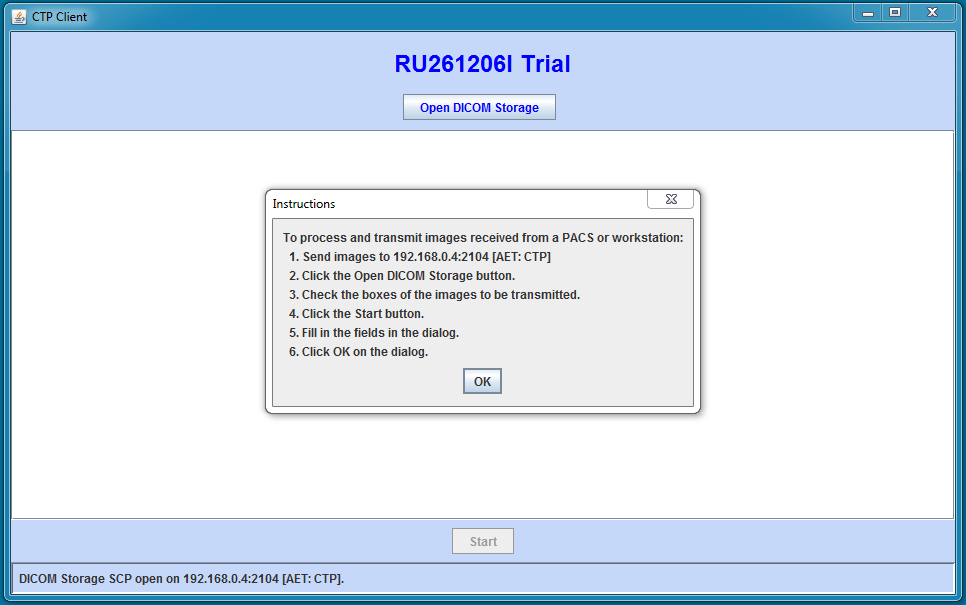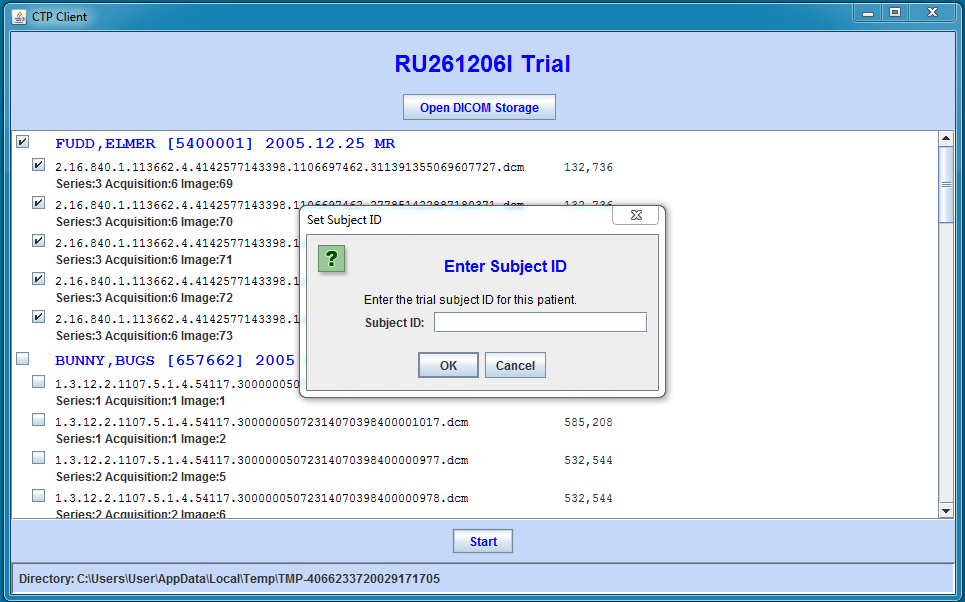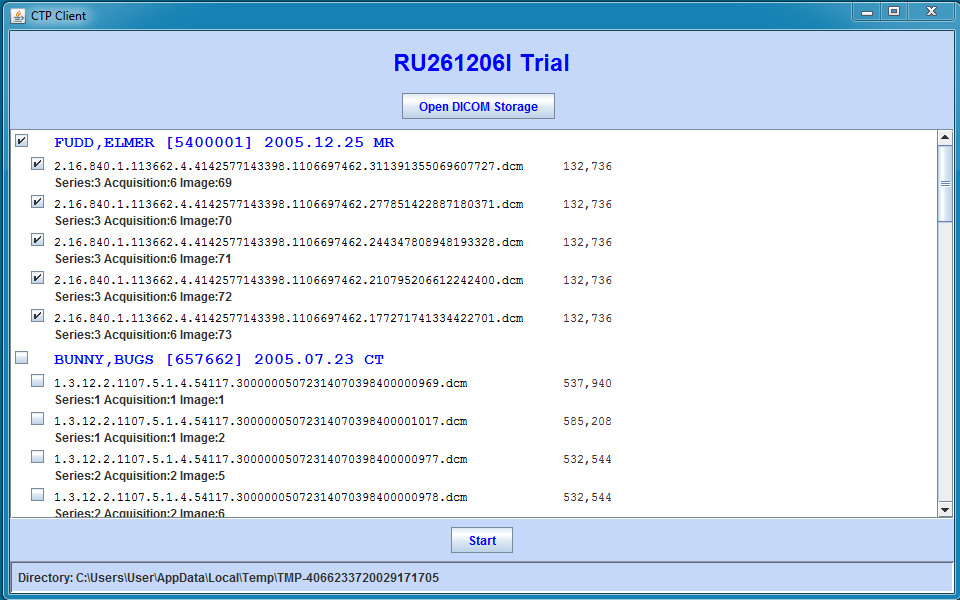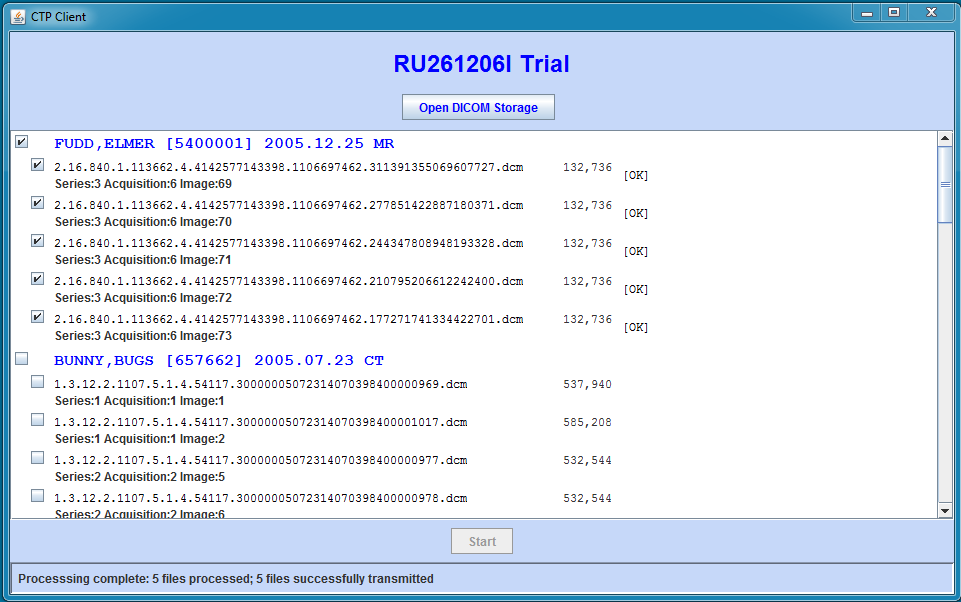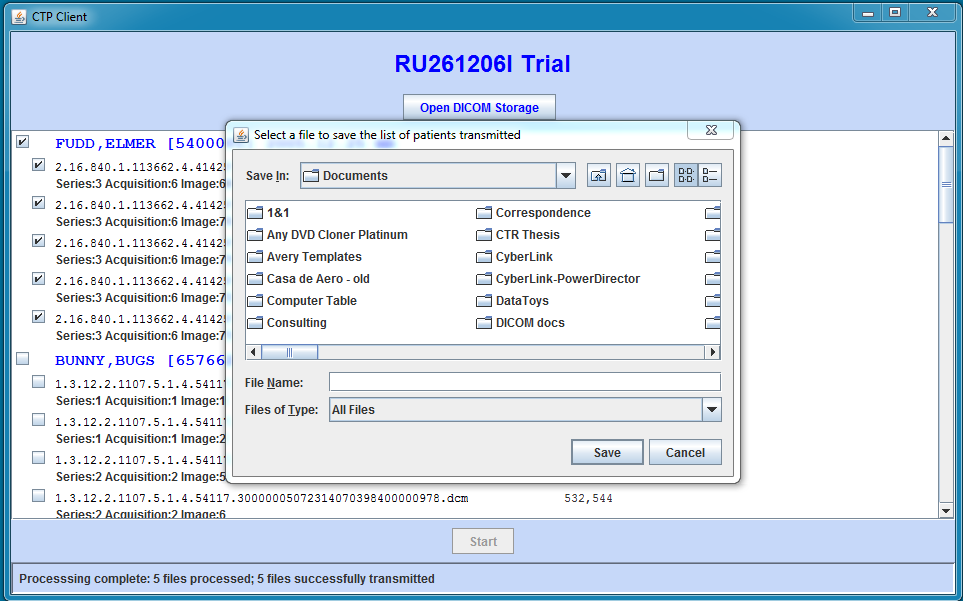Difference between revisions of "Using CTPClient"
| Line 10: | Line 10: | ||
[[Image:CTPClient-WARN.PNG|center]] | [[Image:CTPClient-WARN.PNG|center]] | ||
| − | To proceed, check the box and click | + | To proceed, check the box and click Run. This will cause the browser to start the program. At that point, CTPClient will display its main window. |
==The CTP Main Window== | ==The CTP Main Window== | ||
Revision as of 01:25, 9 November 2013
CTPClient is a program for de-identifying medical images and transmitting them to a central site in a clinical trial. This article describes the user interface of CTPClient. It is intended for staff at clinical trial image acquisition sites who are responsible for selecting studies and sending them to the principal investigator.
1 Starting CTPClient
CTPClient is designed to be run in two ways. It can be installed on any computer, and run like any locally installed program. Alternatively, it can be placed on a web server, and started by entering a URL into a web browser. In this article, the latter method will be described.
When CTPClient is started through a web browser, the clinical trial administrator will provide the image acquisition site a special URL. Since the URL is fairly long to enter, it is best to enter it once and save it as a bookmark or favorite.
Entering the URL causes the browser to download the program and verify the security certificate. Because the RSNA distributes the program with a self-signed certificate, all browsers display a dialog warning the user:
To proceed, check the box and click Run. This will cause the browser to start the program. At that point, CTPClient will display its main window.
2 The CTP Main Window
CTPClient provides two ways to select patient studies for processing and transmission. It can allow the user to browse for images stored on the local computer. It can also receive images from a DICOM source like a workstation or a PACS. In this article, the latter method will be described.
When CTPClient starts, it displays its main window and then shows a popup dialog describing how to select and transmit images. The dialog depends on how the program is configured to receive the images. When the program is configured to obtain images from DICOM sources, the main window and dialog looks like this:
In the picture above, note the footer bar, which indicates that the DICOM receiver has started. The required information for sending images to the DICOM receiver is also shown in the footer.
At this point, you must go to the PACS or workstation and send the images.
3 Selecting Images for Processing
At any point, you can click the Open DICOM
